上海金融发展与城乡收入差距关系的实证研究
VIP免费
摘 要
经过 30 多年改革发展,我国已经从贫穷落后的国家发展成为世界第二大经济
体,人民生活水平得到巨大改善。伴随着经济的迅速发展,关乎民生的诸多问题
也越来越突出,城乡收入差距问题是其中之一。影响城乡收入差距的因素有很多,
金融发展是其中较为重要的一个。上海作为中国大陆的金融中心,金融发展水平
最高,同时也存在一定的城乡收入差距问题。对上海金融发展与城乡收入差距关
系进行研究,探索内在影响机制,分析问题,提出政策建议,对建设和谐社会具
有重要现实意义。
为了保证课题研究的科学性,本文采用理论分析法、规范分析法以及实证分
析法相结合的分析方法对上海金融发展与城乡收入差距的关系进行实证研究。本
文首先回顾了国内外研究金融发展与收入差距的相关文献,了解相关研究领域的
历史与现状。在金融发展与收入差距经典理论的基础上,从产出和投资两个渠道
分析了金融发展影响城乡收入差距的作用机制,总结出金融发展通过工资性收入、
经营收入、财产性收入以及转移性收入四条主要路径影响城乡收入差距;其次,
分别对上海金融发展与城乡收入差距现状进行描述,并通过收入的四个来源定性
地分析了金融发展对城乡收入差距的影响,发现金融发展扩大了城乡收入差距,
但最近几年收入差距表现出较为平稳的发展趋势;最后利用 1978-2012 年相关时间
序列数据,构建金融发展规模、金融发展效率、经济发展以及产业结构指标,通
过相应的 VAR 模型, VECM 模型,Granger 因果检验,脉冲响应以及方差分解研
究上海金融发展对城乡收入差距的影响,在此基础上提出缩小上海城乡收入差距
的政策建议。
实证结果证明:长期内金融发展与城乡收入差距存在稳定的关系,上海金融
发展规模的扩张能够缩小城乡收入差距;而上海金融发展效率的提高会带来社会
收入分配的不公,表现为城乡收入差距的扩大。说明上海城乡金融发展不均衡,
由于政策、风险、收益等原因,金融资源倾向城市,农村金融发展缓慢。在实证
分析结论的基础上从金融发展角度提出缩小上海城乡收入差距的政策建议:上海
应在健全多元化的金融体系,提高金融体系的效率和质量的同时,重视农村金融
发展。应当逐步建立农村资金回流机制,规范非正规金融的发展,大力发展农村
小额信贷机构,完善农村信贷担保体系,加快发展政策性农业保险制度,大力推
动农村金融创新,丰富农村金融产品和服务。
关键词:金融发展 城乡收入差距 经济增长 产业发展
ABSTRACT
Through 30 years of reform and development, China has developed from a poor
backward country into the world's second-largest economy, people's living standards
have been improved dramatically. Along with the rapid development of economy, many
problems about the livelihood of the people is becoming more and more prominent, the
income gap between urban and rural areas is one of them. There are lots of influence
factors of the income gap between urban and rural areas, one of the most important is
financial development. As China's financial center, Shanghai has the highest level of
financial development, at the same time there also has certain income gap problems
between urban and rural areas in Shanghai. Studying the relationship between financial
development and urban-rural income gap in Shanghai, exploring the internal influence
mechanism, analyzing the problem and putting forward the policy advice, have
important practical significance to build a harmonious society.
In order to ensure the scientific nature of the research, this paper adopts analysis
methods of theoretical analysis, specification analysis and empirical analysis to do
empirical research on the relationship between Shanghai financial development and
urban-rural income gap. Firstly, this paper reviews the related literatures researching on
financial development and income gap of domestic and foreign, to understand the
history and current situation of related researching fields. On the basis of classical
theory in financial development and income gap, analyzing the mechanism between
financial development and urban-rural income gap by output and investment channels,
coming to the conclusion that financial development has affected urban-rural income
gap through salary income, four main paths of income like business income, property
income and transfer income; Secondly, this paper describes the status quo of Shanghai's
financial development and urban-rural income gap respectively and analyzes the
financial development's influence on urban-rural income gap qualitatively through four
income sources. Found that the financial development has expanded urban-rural income
gap, but the growing trend of income gap has showed relatively stable in recent years;
Finally, this paper uses relevant time series data from 1978 to 2012 to build indicators of
financial development scale, financial development efficiency, economic development
and industrial structure, through corresponding VAR model, VECM model, Granger
causality test, impulse response and variance decomposition to research the impact of
Shanghai financial development on urban-rural income gap, on the basis of the research,
puts forward some policy recommendations to reduce Shanghai urban-rural income gap.
The empirical result shows that in the long term there is stable relationship
between financial development and urban-rural income gap, the expansion of the scale
of financial development of Shanghai can narrow urban-rural income gap; while the
enhance of the efficiency of financial development of Shanghai will bring social
inequality of income distribution, resulting in expansion of urban-rural income gap. It
shows the imbalance of financial development between Shanghai urban and rural areas,
financial resources flow to urban areas and the financial development of rural areas is
slow. From the perspective of financial development, this paper puts forward some
policy suggestions to reduce Shanghai urban-rural income gap on the basis of the
empirical analysis results: Shanghai should attach great importance to the rural financial
development in the meanwhile of perfecting a diversified financial system and
improving the efficiency and quality of the financial system. It shall gradually establish
rural capital recycling mechanism, standardize the development of informal finance,
energetically develop the rural microfinance institutions, perfect the rural credit
guarantee system, speed up the development of policy-related agricultural insurance
system, and vigorously promote rural financial innovation, enrich rural financial
products and services.
Key Words: Financial Development, Urban-Rural Income Gap,
Economic Growth, Industry Development
目 录
中文摘要
ABSTRACT
第一章 绪 论 ......................................................1
1.1 研究背景与意义 ............................................. 1
1.1.1 研究背景 ............................................... 1
1.1.2 研究意义 ............................................... 2
1.2 文献综述 .................................................... 2
1.2.1 国外文献综述 ........................................... 2
1.2.2 国内文献综述 ........................................... 6
1.2.3 文献综述评价 ........................................... 8
1.3 研究内容与研究方法 .......................................... 8
1.3.1 研究内容 ............................................... 8
1.3.2 研究方法 ............................................... 9
1.4 研究基本框架 ............................................... 10
1.5 研究特色与不足 ............................................. 10
第二章 金融发展与城乡收入差距的理论基础 ..........................12
2.1 现代金融发展的理论 ......................................... 12
2.1.1 金融结构论 ............................................ 12
2.1.2 金融深化论 ............................................ 13
2.1.3 金融约束论 ............................................ 13
2.1.4 金融功能论 ............................................ 14
2.2 城乡收入分配的理论 ......................................... 15
2.2.1 二元经济理论 .......................................... 15
2.2.2 倒U理论 .............................................. 16
2.3 金融发展对城乡收入差距的作用机制 ........................... 16
2.3.1 金融发展对产出的影响 .................................. 16
2.3.2 金融发展通过产出对城乡收入差距的影响 .................. 17
2.3.3 金融发展通过投资对城乡收入差距的影响 .................. 19
2.3.4 金融发展通过收入组成对城乡收入差距的影响 .............. 20
2.3.5 金融发展影响城乡收入差距的作用路径 .................... 21
第三章 上海金融发展与城乡收入差距的现状分析 ......................22
3.1 上海金融发展现状分析 ....................................... 22
3.1.1 银行业金融机构快速发展 ................................ 23
3.1.2 证券市场缓慢发展 ...................................... 24
3.1.4 保险市场平稳发展 ...................................... 25
3.1.5 社会融资结构继续改善 .................................. 26
3.1.6 金融市场体系建设稳步推进 .............................. 30
3.2 上海城乡收入差距现状分析 ................................... 30
3.2.1 城乡居民人均收入的差距演变 ............................ 30
3.2.2 城乡居民收入差距的结构分析 ............................ 33
3.3 上海金融发展对城乡收入差距现状的影响分析 ................... 34
3.3.1 工资性收入途径分析 .................................... 35
3.3.2 经营收入途径分析 ...................................... 36
3.3.3 财产性收入途径分析 .................................... 37
3.3.4 转移性收入途径分析 .................................... 37
第四章 上海金融发展与城乡收入差距的实证分析 ......................39
4.1 指标选取、数据来源说明及模型设定 ........................... 39
4.1.1 指标的选取 ............................................ 39
4.1.2 数据来源说明 .......................................... 40
4.1.3 模型设定 .............................................. 40
4.2 实证分析 ................................................... 40
4.2.1OLS 回归分析 ........................................... 40
4.2.2 单位根检验 ............................................ 41
4.2.3 协整检验 .............................................. 42
4.2.4 建立 VEC 模型 .......................................... 44
4.2.5 格兰杰因果检验 ........................................ 44
4.2.6 脉冲响应函数 .......................................... 45
4.2.7 方差分解 .............................................. 47
4.3 实证结果 ................................................... 47
4.3.1 实证结果分析 .......................................... 47
4.3.2 实证结果总结 .......................................... 48
第五章 结论与政策建议 ............................................50
5.1 结论 ....................................................... 50
5.2 政策建议 ................................................... 51
5.2.1 健全多元化的金融体系 .................................. 51
5.2.2 提高金融体系的效率和质量 .............................. 51
5.2.3 重视农村金融发展 ...................................... 52
5.3 研究展望 ................................................... 55
附 录 ............................................................56
参考文献 .........................................................60
在读期间公开发表的论文和承担科研项目及取得成果 ...................63
致 谢 ............................................................64
相关推荐
-
USST_Arts_112480743自动生产线的同步维修模型及案例分析VIP免费
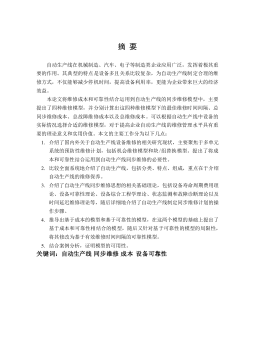
 2025-01-09 7
2025-01-09 7 -
USST_Arts_112480745基于供需网特征理念的企业间关系状态研究VIP免费
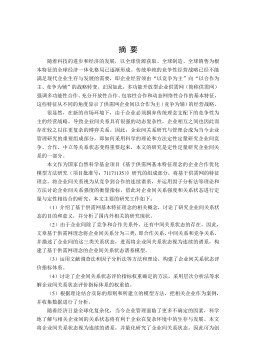
 2025-01-09 9
2025-01-09 9 -
USST_Arts_112480756 我国城镇化与能源消费结构间关系的研VIP免费
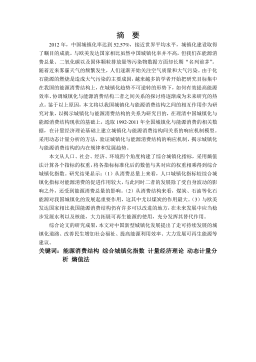
 2025-01-09 7
2025-01-09 7 -
USST_Arts_112490763 企业创新型团队社会网络、知识管理过程及团队创造力关系研究VIP免费
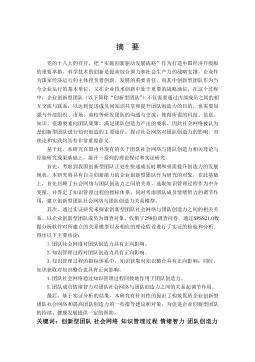
 2025-01-09 7
2025-01-09 7 -
USST_Arts_112490769创新团队执行力影响因素分析VIP免费

 2025-01-09 9
2025-01-09 9 -
USST_Arts_112070649基于团队自反性的科技型企业TMT特征对企业绩效的影响研究VIP免费

 2025-01-09 9
2025-01-09 9 -
TR公司工业机器人市场发展战略研究VIP免费
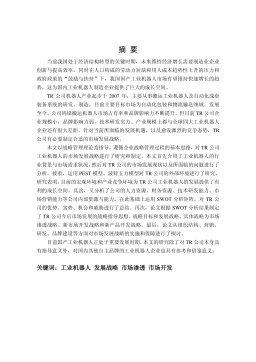
 2025-01-09 9
2025-01-09 9 -
二氧化碳套管式气冷器的研究VIP免费
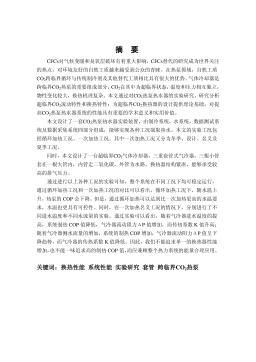
 2025-01-09 8
2025-01-09 8 -
非共沸混合物在微通道水平单管内流动沸腾特性VIP免费
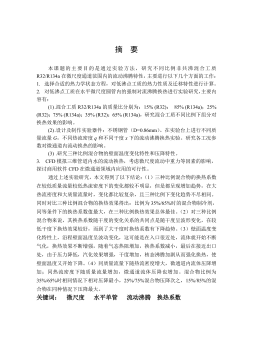
 2025-01-09 8
2025-01-09 8 -
基于MRO的连铸辊维护管理系统研究VIP免费
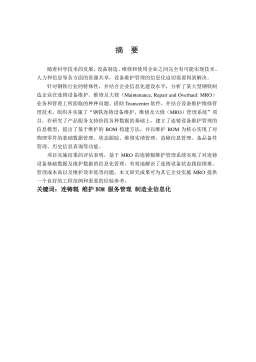
 2025-01-09 6
2025-01-09 6
作者:赵德峰
分类:高等教育资料
价格:15积分
属性:68 页
大小:2.3MB
格式:PDF
时间:2025-01-09
作者详情
相关内容
-

USST_Arts_112070649基于团队自反性的科技型企业TMT特征对企业绩效的影响研究
分类:高等教育资料
时间:2025-01-09
标签:无
格式:PDF
价格:15 积分
-

TR公司工业机器人市场发展战略研究
分类:高等教育资料
时间:2025-01-09
标签:无
格式:PDF
价格:15 积分
-

二氧化碳套管式气冷器的研究
分类:高等教育资料
时间:2025-01-09
标签:无
格式:PDF
价格:15 积分
-

非共沸混合物在微通道水平单管内流动沸腾特性
分类:高等教育资料
时间:2025-01-09
标签:无
格式:PDF
价格:15 积分
-

基于MRO的连铸辊维护管理系统研究
分类:高等教育资料
时间:2025-01-09
标签:无
格式:PDF
价格:15 积分





